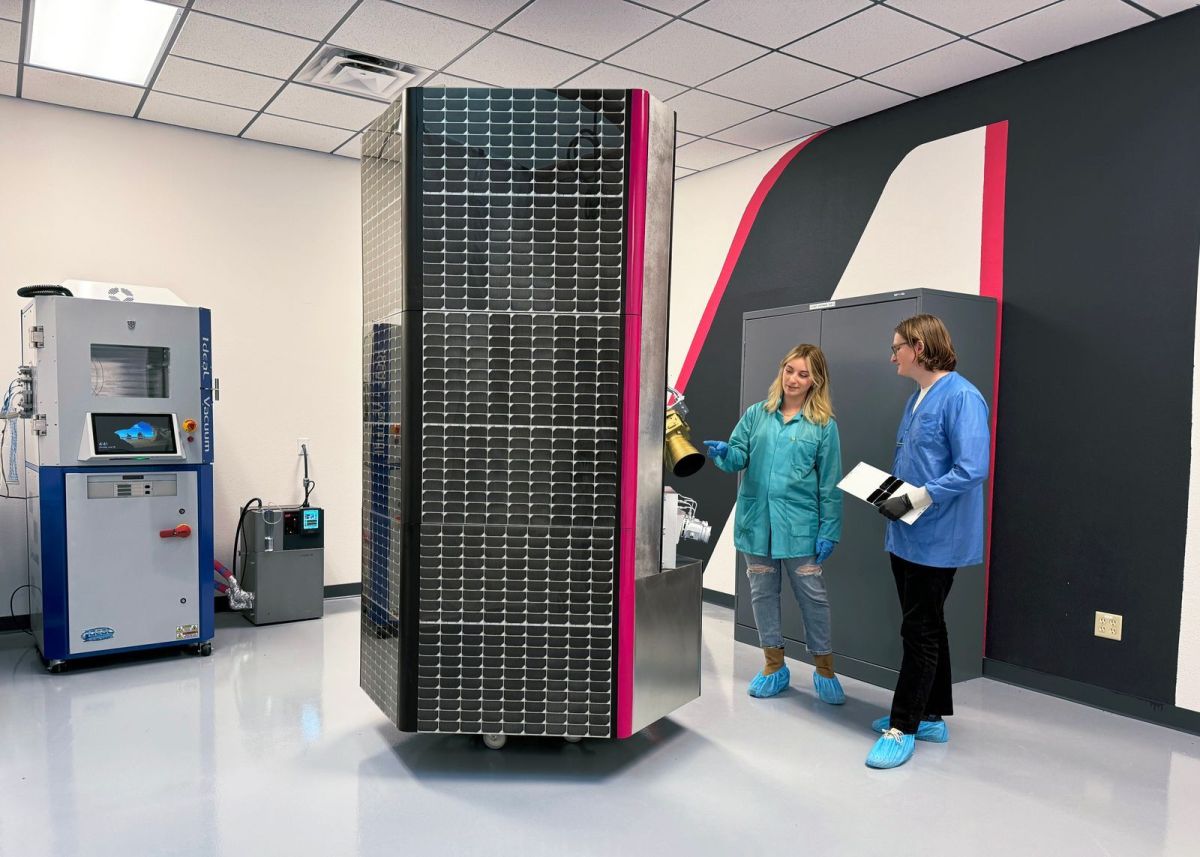Satellite imagery startup Albedo is preparing for its up close and personal debut.
Albedo’s first satellite will take to orbit next spring as the company looks to turn the commercial Earth observation industry upside down with its novel approach and ultra-high resolution cameras.
The satellite, called Clarity, will hitch a ride to very low Earth orbit (VLEO) on SpaceX’s Transporter-13 ride share mission. That mission is currently set to launch no earlier than February 2025, so Albedo should have its first satellite operating in orbit this time next year.
Albedo additionally announced seven customers that reserved a portion of Clarity’s image tasking, including satellite imagery broker SkyFi and German energy company Open Grid Europe.
“It’s an aggressive schedule,” Albedo CEO Topher Haddad said. “This is the first time we’re posting a satellite mock up publicly. I think a lot of people probably think we’re more of a small satellite, but it’s a pretty complex robotic system with a large aperture telescope, and a pretty powerful capability. A lot of that timeline was mostly driven by the custom technology we’ve been developing to fly a high-res system in VLEO.”
The startup is developing a first-of-its-kind spacecraft capable of capturing extremely high-resolution imagery, operating in very low Earth orbit — images so sharp, the company claims, that they’ve historically been the exclusive purview of American defense and intelligence organizations. The company says it will be able to sell 10-centimeter-per-pixel images to commercial and government customers at unprecedentedly low prices because of its unique — and quite large — satellite bus.
(A 10-centimeter resolution image means that each pixel covers an area on the ground the size of 10 centimeters by 10 centimeters. The largest optical imagery providers today collect images at a 30-centimeter resolution, which is algorithmically improved to 15 centimeters.)
Satellites that do collect 10-centimeter resolution tend to operate in higher orbital altitudes, like low Earth orbit, and by some estimates cost billions of dollars each to manufacture and launch. Low Earth orbit is generally defined as the orbital band at an altitude of around 2,000 kilometers, while VLEO is between 250 and 450 kilometers.
Albedo’s satellites will be the size of refrigerators when all is said and done, which is much larger than many other commercial Earth observation satellites that are currently operating even further away from Earth. It seems counter-intuitive to make the satellites so heavy — one might think that to counter the increased atmospheric drag, it would be imperative to make the satellites as light as possible — but Albedo CEO Topher Haddad said in a recent interview that the company is able to counteract that drag using ultra-efficient electric propulsion and particular design decisions, like mounting the solar panels on the spacecraft instead of deploying them in two wings.
“You normally deploy [the solar panels] because you can generate more power that way, but we needed to minimize the cross-sectional area so that that mass and that electric propulsion work out to give us the counteracting piece of the drag,” Haddad explained.
As the company moves toward putting hardware in orbit, its also brought on Kathryn Tobey as its first independent director on its now six-person board. Tobey had a 34-year career at Lockheed Martin, where she eventually became VP of the company’s $3 billion Space, Special Programs line of business. (Prior to founding Albedo, Haddad cut his teeth at Lockheed Martin working on some of these same systems.) That division did high-tech national security work, including classified projects — exactly the customer set Albedo is aiming to target on the government side.
“She brings both those superpowers, which I think is pretty rare to have, both that deep technical understanding, not just of satellites, but of our unique niche of high performance imaging satellites, and the national security customer relationship and understanding that mission very well,” Haddad said.

